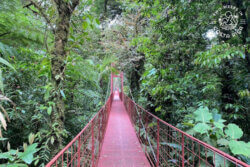Last Updated: May 8, 2024
Monteverde has several reserves to take in the area’s abundant nature, but probably the most popular is the Monteverde Cloud Forest Reserve (Reserva Biologica Bosque Nuboso Monteverde). This Reserve offers a variety of trails and has several characteristics that make it unique. Most notably, it is positioned at the location of the Continental Divide where the Atlantic and Pacific slopes collide. The Reserve is also known for its red hanging bridge, which you see in all the pictures. In this post, we’ll tell you what you need to know to plan your hike to this famous reserve, including ways to avoid the crowds.
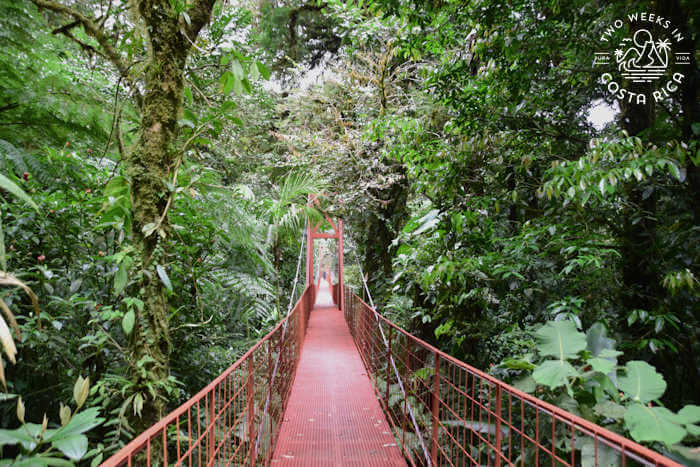
History of the Reserve
The Monteverde Cloud Forest Biological Reserve has a rich history.
It all started when a scientist named George Powell who was visiting the area became concerned about conserving Monteverde’s rich biodiversity. Settlers were moving into the forest, and widespread hunting was jeopardizing the flora and fauna.
Determined to make a difference, Powell reached out to a local man named Wilford Guindon, one of the first Quakers to arrive in Monteverde. Together, the two promoted the establishment of a nature reserve, which came to fruition in 1972 with the help of the Tropical Science Center.
The Reserve was started with a donation of 328 hectares (820 acres) of land. The Tropical Science Center quickly expanded that by soliciting donations from individuals and conservation organizations around the world. Included in the list of donors were some prominent names like the World Wildlife Fund, Nature Conservancy, and International Council for Bird Preservation (BirdLife International).
Over time, the Reserve was expanded with the help of Guindon and others to include adjoining areas that were being threatened by development.
An interesting event happening in the background at this time was a 1977 BBC documentary. This film about Monteverde’s cloud forests dramatically increased interest in the region, and in particular, the preservation of tropical rainforests.
Today, the Monteverde Cloud Forest Reserve encompasses an impressive 10,500 hectares (25,946 acres).
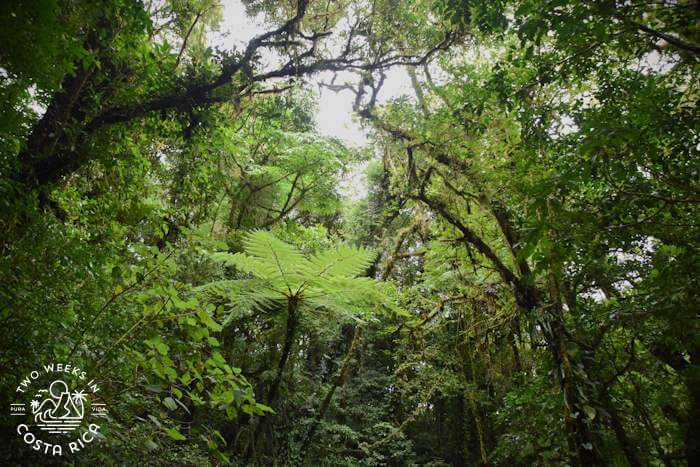
What You’ll See at the Monteverde Cloud Forest Reserve
Overview
Four different life zones exist on the massive property at the Monteverde Cloud Forest Reserve, each with a slightly different ecosystem. It is this diversity that draws so many different types of plants and wildlife.
To get an idea, over 100 kinds of mammals, 500 birds, and 120 amphibians and reptiles can be found. In addition, the property hosts tens of thousands of insects and over 3,000 plants, including more than 500 species of orchid alone.
Birds and Animals
Some of the more common animals seen are white-faced and howler monkeys, paca and agouti (small rodent-like animals), and coati (similar to a raccoon). As we mentioned, bird species are numerous here as well. Hummingbirds are plentiful and you also can spot the Three-Wattled Bellbird.
One of the biggest draws for birders, though, is the Resplendent Quetzal. This brightly colored bird with extraordinarily long tail feathers can be seen in only a few parts of Costa Rica. It spends much of the year in Monteverde but is easiest to spot in March and April during their breeding season.
Tip: To see the most, hire a guide. Although Monteverde is one of the most biodiverse areas of Costa Rica, wildlife is often hidden high in the canopy or in the shifting clouds. A good guide not only knows where to look, but also has a scope, allowing you to see things up in the trees. See below for information on booking a guide.

Scenery
Even with a guide, there is still a possibility that wildlife will remain mostly hidden at the Monteverde Cloud Forest Reserve. Luckily, though, walking along the trails is a unique experience in itself due to the climate and landscape.
The Reserve is at a very high altitude and you will often pass through thick clouds shifting in the wind. The trees and plant life are also unlike anywhere in Costa Rica. Thick moss and lichens cover every inch of bark and rock, and broad-leaf plants, vines, and bromeliads practically grow on top of one another.
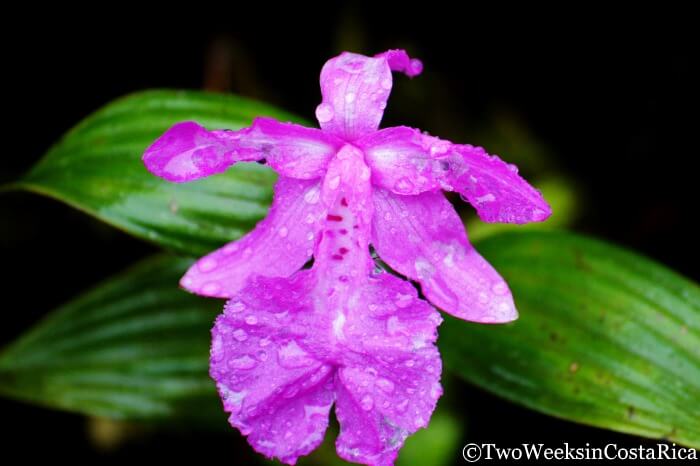
Trails
To protect the Monteverde Cloud Forest Reserve’s abundant flora and fauna, only a small portion (about 3%) of the property is open to the public. Still, the Reserve’s 11 trails amount to 13 km (8 miles) of path to explore. Here is a picture of the trail map.

There are several different options for hikes. Below we cover the two main loops.
Longer Loop
This is a good choice for a hike if you have about a half day to spend.
The loop goes around the perimeter, starting on Sendero Bosque Nuboso (Cloud Forest Trail). Sendero Bosque Nuboso leads through thick cloud forest and is supposed to be one of the best places to spot the elusive Resplendant Queztal bird.
The trail ascends, and in about an hour, you will reach a lookout called La Ventana (the Window).
Here, you will find a beautiful view of the Continental Divide, the point where the Atlantic and Pacific slopes converge. Seeing the moisture-rich trade winds of the Atlantic slope collide with warm air of the Pacific slope is one of the most memorable parts of visiting the Reserve. Although the clouds are often racing by, we have always been able to catch quick glimpses of the beautiful valley below.

From the viewpoint, you continue on Sendero Camino for a short time and connect to Sendero Roble, Sendero Chomogo, and eventually Sendero Tosi. We love this part of the hike because the trail runs along a steep ridge, putting you at canopy level with many of the treetops.
From this vantage point, it is a lot easier to see wildlife. Though it can still sometimes be difficult to see through the thick haze, in this area we have spotted a white-faced capuchin monkey, mother and baby white-nosed coati, gigantic snail, small land crab, and lots of interesting insects, as well as several types of birds, including wrens, warblers, and thrushes.
Plan on spending about a half day for the longer loop so that you can go slowly and look for birds and wildlife. The trails are well maintained, but still rustic in places. Conditions are moderate in difficulty with some steeper spots and rocks and roots to navigate.
Shorter/Main Loop
This is the most visited and busiest loop.
Sendero Camino (Road Trail) is wide like a road and leads to the hanging bridge (see cover photo, above). It’s mostly flat and has even terrain so is a great option with younger kids or anyone looking for an easier hike.
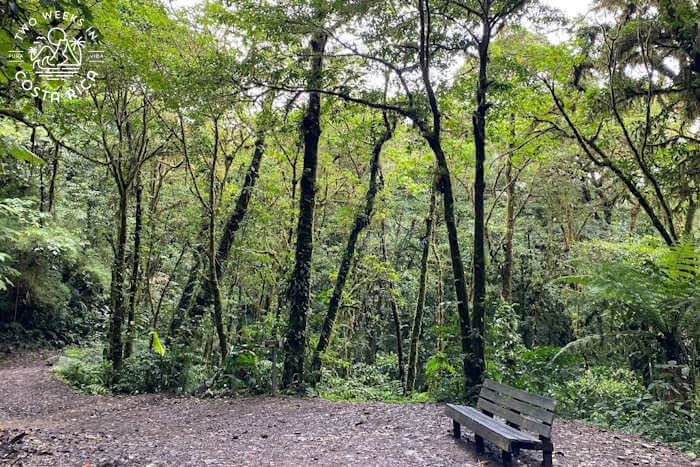
The hanging bridge is really beautiful and worth the stop, even if it’s a little busy. From high atop the swaying bridge, you can get a bird’s-eye view of the overflowing canopy.
Note: This hanging bridge was previously damaged during a big storm and temporarily closed. As of 2024, it has been fully repaired and is open to visitors again.
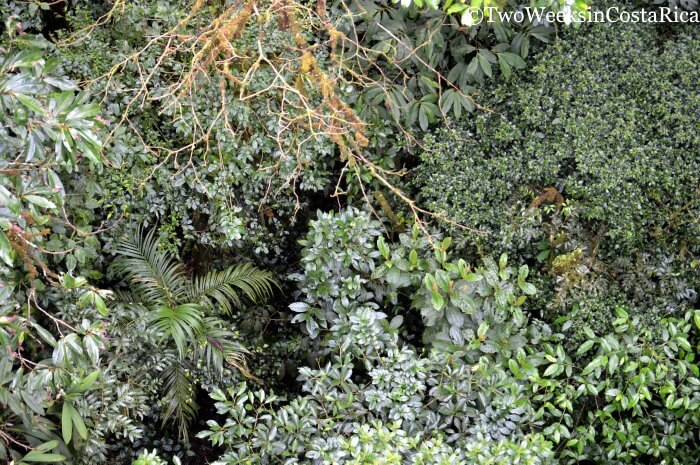
From the hanging bridge, you can connect back to the ranger station on Sendero Wilford Guindon.
This trail was named after the prominent conservationist who helped found the Reserve. It is narrower and more scenic. On our visits, we have seen some birds and a coati on one occasion, which was a nice surprise.
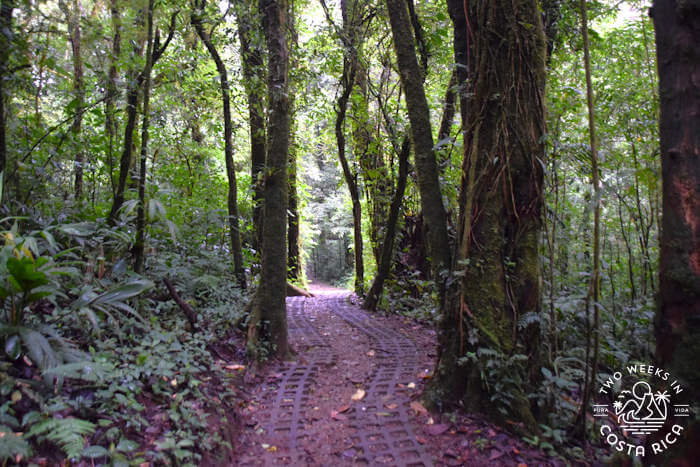
The main loop takes about 1.5 hours.
Sendero Camino is one of the easier trails in the Reserve. Sendero Wilford Guindon is more difficult, with some steps, so take Sendero Camino both ways if you’re looking for something easier.
Planning Your Visit to the Monteverde Cloud Forest Reserve
Hours
Open daily from 7:00 a.m. to 4:00 p.m.
Entry Limit
Tickets are capped at 250 people per day. If tickets are not available, they will put you on a wait list.
You can buy tickets directly at the Reserve (cash or credit card). During busy times of year (December-January and Easter week), it is especially important to buy tickets in advance. These can be purchased through the Reserve’s website.
Ticket Prices
Foreigners – $26. Citizens and residents – $8. Half-price for children ages 6-12. Children under 6 are free. Discounts provided for students with valid ID.
Guided Tours
If you’d like to book a guide, we work with a small local company in Monteverde with excellent, certified naturalists. Use the link below to make a booking. Booking through us costs the same and helps support our website. Once you request a booking, we’ll get back to you by email. You won’t pay until your reservation is confirmed.
When to Visit – Avoiding the Crowds
The Monteverde Cloud Forest Reserve is one of the busiest nature reserves in the area. It often gets busy, with busloads of visitors looking to discover the cloud forest. Avoid peak travel times like Christmas, New Years, and Easter to avoid the biggest crowds.
The rainy season, May to November, sees the fewest visitors. The rainiest month in Monteverde is October.
What to Wear/Pack
The average temperature in Monteverde is 65.8°F (18.8°C), and it often feels cooler due to the moisture.
We recommend layers and lightweight long pants. A poncho or raincoat is also a necessity as rain is frequent in the cloud forest. For footwear, hiking boots or sturdy sneakers with good grips are best. If you are planning a long hike, be sure to get an inexpensive backpack cover in case of a heavy downpour. Check out our post on packing your daypack for more tips on what to bring.

Cafeteria and Gift Shop
If you need a hot drink or snack, the Reserve has a restaurant and cafeteria. There is also a gift shop, which has some interesting souvenirs and a good assortment of nature guides.
Parking
Previously, you could park right at the Reserve. Now, however, the official parking lot is a few kilometers before the entrance. You can park there ($5/day) and they will take you in a shuttle van to the Reserve entrance. The lot is secure and guarded.
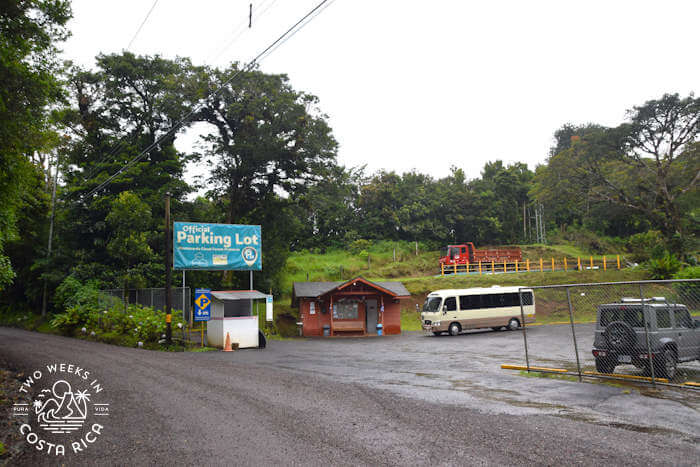
You also can park along the street outside the Reserve but this isn’t secure.
Conclusion
Out of all the nature reserves in Monteverde, the Monteverde Cloud Forest Reserve is one of our favorites. The trails are not only scenic and rugged, but also offer interesting viewpoints. We have enjoyed seeing the canopy from the hanging bridge and especially loved the view of the Continental Divide.
Have you visited one of Monteverde’s nature reserves? Share your experience below.
Some of the links in this post are connected to affiliate programs we have joined. As an Amazon Associate we earn from qualifying purchases.
Last Updated: May 8, 2024
Want more info for your trip to Monteverde? Check out these posts:
- Monteverde: A Forest in the Clouds – Monteverde has a ton of options for hotels and activities. Our destination guide will help you figure out the best places to stay and things to do.
- Costa Rica Rental Car Discount – The Monteverde-Santa Elena area is more spread out so it is nice to have a rental car to explore. Save on a sturdy 4×4 with our special discount.
- Driving to Monteverde – You’ll need to take some dirt roads to get to Monteverde but most people find the drive to be manageable. Read our guide to learn the best routes and see videos of actual road conditions.

